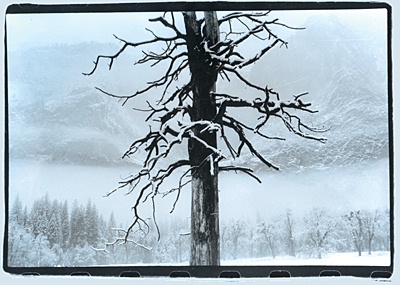All Nonfiction
- Bullying
- Books
- Academic
- Author Interviews
- Celebrity interviews
- College Articles
- College Essays
- Educator of the Year
- Heroes
- Interviews
- Memoir
- Personal Experience
- Sports
- Travel & Culture
All Opinions
- Bullying
- Current Events / Politics
- Discrimination
- Drugs / Alcohol / Smoking
- Entertainment / Celebrities
- Environment
- Love / Relationships
- Movies / Music / TV
- Pop Culture / Trends
- School / College
- Social Issues / Civics
- Spirituality / Religion
- Sports / Hobbies
All Hot Topics
- Bullying
- Community Service
- Environment
- Health
- Letters to the Editor
- Pride & Prejudice
- What Matters
- Back
Summer Guide
- Program Links
- Program Reviews
- Back
College Guide
- College Links
- College Reviews
- College Essays
- College Articles
- Back
If Winter Comes, Spring Will not Be Far Behind
Europe during 1819 is at a time when labor and revolutionary movements surge forward. For their rights to live, the British working-class wages a heroic struggle against the bourgeoisie who maltreats his employees. Under this turbulent circumstance, Percy Shelley writes Ode to the West Wind, depicting a powerful West Wind blowing into a forest, upon the sky, and across an ocean, as symbolism for the revolutionary storm sweeping across Europe. Mr. Shelley expresses his strong belief that although the Labor Revolution is destructive, it will lead to a significant victory, corresponding to the natural flow that even though winter is terrible, it leads to a thriving spring.
In the first three stanzas, Mr. Shelley focuses on how the mighty West Wind destroys the world in winter, symbolizing how violent revolutions push Europe into wild chaos. He begins by showing the West Wind relentlessly driving “Yellow, and black, and pale, and hectic red, (decaying leaves in winter) / pestilence-stricken multitudes / to their dark wintry bed” (4-6). In this imagery, the pestilence-stricken leaves represent the wealthy tycoons back that time, who sicken workers, disease moral standards, and harm one century’s European society. To stop the plague from spreading and causing more sufferings, the West Wind of winter fiercely sweeps the dead leaves away and buries them under the frosty ground, their dark tombs. The howling of the wind is metaphorized as the stubborn rebellions led by European laborers to pull the decadent middle class out of their wealth and power. With the usage of “dark wintry bed” to represent graves, the metaphor also vividly shows the revolutionary wind piercing through Europe with bloodshed and death. Mr. Shelley later includes a scene of the West Wind bursting “Black rain, and fire, and hail” in a dusky winter sky. He uses the color “black” to echo the dark revolutionary era that he has experienced. He visualizes his experience of laborers fighting against the corrupt middle class and struggling for their freedom through armed uprisings as the West Wind blowing away the thick clouds and ruining the world with extreme weathers. During the revolution, the competing forces are uncontrollable as the torrential rain and hail are pouring; the situation is complicated as no one knows what is hiding in the rolling sky; the revolution itself is destructive as the roar of the harsh wind with storms and chilliness. Hence, winter is terrifying because of the fierce West Wind. The revolution is terrifying because of its bloodiness and turmoil.
Mr. Shelley, however, sees the West Wind not only as a destroyer but also as a preserver. He argues the West Wind for “Driving sweet buds like flocks to feed in air / With living hues and odours plain and hill” (11-12). While the revolutionary West Wind violently drives away social peace and harmony, it brings in sweet buds, symbolic to members of the working class, who show the world their bravery, talents, and solidarity in the revolts. The revolution provides a stage for laborers to exhibit their abilities, equally as the bourgeoisie, in terms of making contributions to the world, like the metaphor of the West Wind scattering new seeds into the ground as to where they can grow to decorate the world. The young labor forces, then, are rising with full energy to break through the thick layer of mud, the control from the bourgeoisie. Mr. Shelley thus shows his faith in the working class that their revolutionary goals will be achieved while the symbolic seeds will start sprouting, injecting their hues and odors into the dead of winter. Nature, destroyed by the violence of the revolution, will then be recovered with the awakening power of workers, and a revolutionary spring will arrive. Since spring is often seen as a season of flourishment and hope, Mr. Shelley is convinced that the bloody revolution will eventually triumph to bring in a new era of prosperity and peace, with young workers and their extraordinary intelligence.
Without a doubt, the Labor Revolution is a gory event, which parallels the horrible winter with the howling West Wind. Although there is winter as a frightening season, there is also spring as a season of hope. Similarly, although the revolution is influencing Europe in an extremely negative way, it is also introducing intelligent workers to the world and injecting vigor that can shape the world to a positive direction. Mr. Shelley questions at last, “If Winter comes, can Spring be far behind?”, and my answer is spring is right ahead, accompanying with a revolutionary victory and a brand-new flourishing era.
Works Cited
Shelley, Percy Bysshe. “Ode to the West Wind.” Poetry Foundation,
https://www.poetryfoundation.org/poems/45134/ode-to-the-west-wind. Accessed 04 Dec. 2021.

Similar Articles
JOIN THE DISCUSSION
This article has 0 comments.
